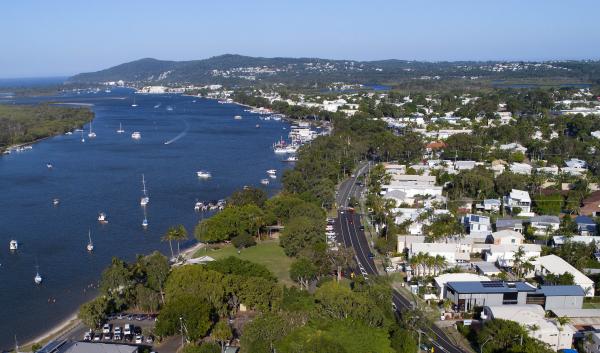The biggest issues in developing the new Noosa Plan, short term accommodation (STA), continues to raise questions in the community as it did in Noosa Council this week in discussions over a development application for an STA at 3 Robert Street, Noosaville.
Council CEO Brett de Chastel said there were two main issues relating to STAs that dominated discussion during the development of the Noosa Plan and just weren’t going away.
These were to what extent does Council have the right to regulate people’s choice to live in or rent their properties and the rights of residents to retain their traditional residential amenity.
Under the new planning scheme the shire is mapped into tourist, high, medium and low density residential zones with STAs considered an “inconsistent use“ of property in low density zones.
Real estate agent Dan Neylan said the new rules over STAs were continuing to confuse people and the zones were impacting property values.
He said in a recent case a buyer pulled out of buying a $2 million property when he found out it could not be holiday let and the property later sold for $200,000 less than was initially offered.
A holiday rental agency spokeswoman said recent increases in Noosa property values had led some holiday tariffs to skyrocket. She said the restrictions on STAs would price some mum and dad holiday makers out of Noosa.
Sunshine Beach resident Julia Craddock who neighbours a property approved last month for STA development describes herself as “a long standing resident whose amenity is being destroyed by short-term accommodation”.
“Many passersby approached me and asked me what the owners’ public notice of “Application for Material Change STA” meant? I would explain and each time the sneering, disgusted response would be “party-house”. Yes I know there are to be no party-houses in Noosa, but the practical reality and lived experience of residents is that STA’s are exactly that,” she said.
Council estimates there are 4900 dwellings being used for short term accommodation in Noosa Shire. Since the Noosa Plan 2020 was adopted last July there have been eight applications for STA under the new planning scheme and 17 under the superseded planning scheme. Council’s development assessment manager Kerri Coyle said Council had received 20 requests to provide written confirmation that a property had existing rights for STA. She said the requests typically came from the proposed sale of a property with the new land owner wishing to confirm existing use rights and a number of the properties were unable to demonstrate that they had existing use rights.
In Council’s Planning and Environment Committee Meeting on Tuesday Cr Tom Wegener questioned how it was possible to allow an STA development application approval to essentially enable a commercial letting business to operate permanently without having to comply with the requirements needed by commercial operators such as resorts and was told there were no requirements in the building code.
Cr Wegener also asked what happens when tenants don’t comply with Codes of Conduct within STAs and was told without a Local Law to govern conduct Council conditions didn’t call for Codes of Conduct, though applicants have said they were willing to have them.
Cr Karen Finkel raised concerns about the percentage of STAs in residential communities, its impact on amenity and impact on the availability of affordable housing.
“At what point is this going to reach saturation and lose the amenity of residential neighbourhoods,“ she said. “Is the rationale to create a precinct or do we want to maintain a balance.“
Cr Finkel also said given Council was looking for land to build affordable housing were they making the best use of built structures given the shortage of land.
The state government imposed a condition on approving the Noosa Plan to monitor the outcomes relating to short-term accommodation, tourism and housing supply across the residential zones for two years post-adoption. The monitoring needs to include comparison data to demonstrate the relevance of the scheme, the economic and social benefits across the residential zones, housing supply, diversity and tourism.
Ms Coyle said Council would conduct a preliminary review of STAs this July and a full review a year later to determine any change in the number of properties approved or operating STA.
There will be more discussion in Monday’s General Meeting with the issue referred due to its significance in the community.


![[READER COMPETITION] – Win a Viking european river voyage valued at $16,190](https://noosatoday.com.au/wp-content/uploads/2025/07/viking-competition-wesbite-image-3-324x235.png)




